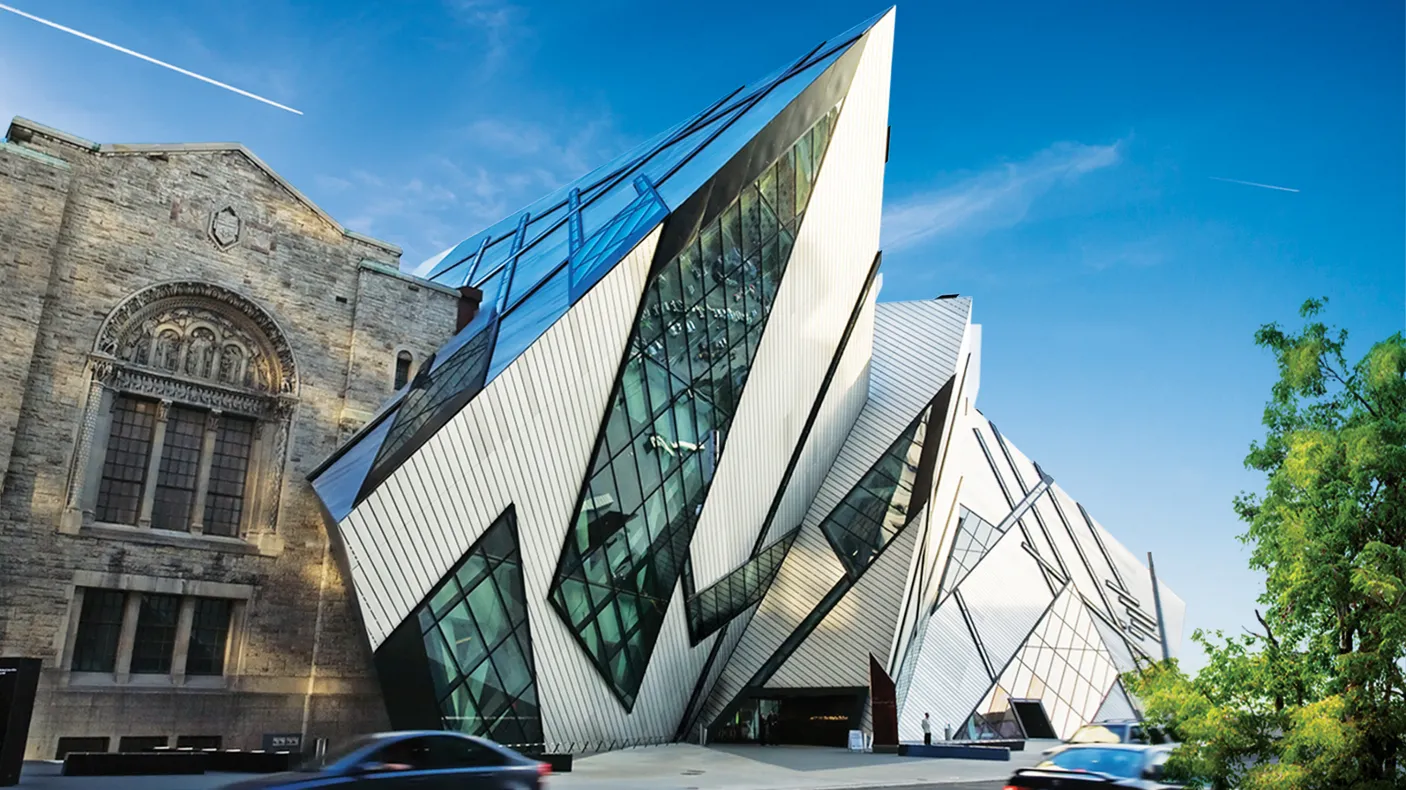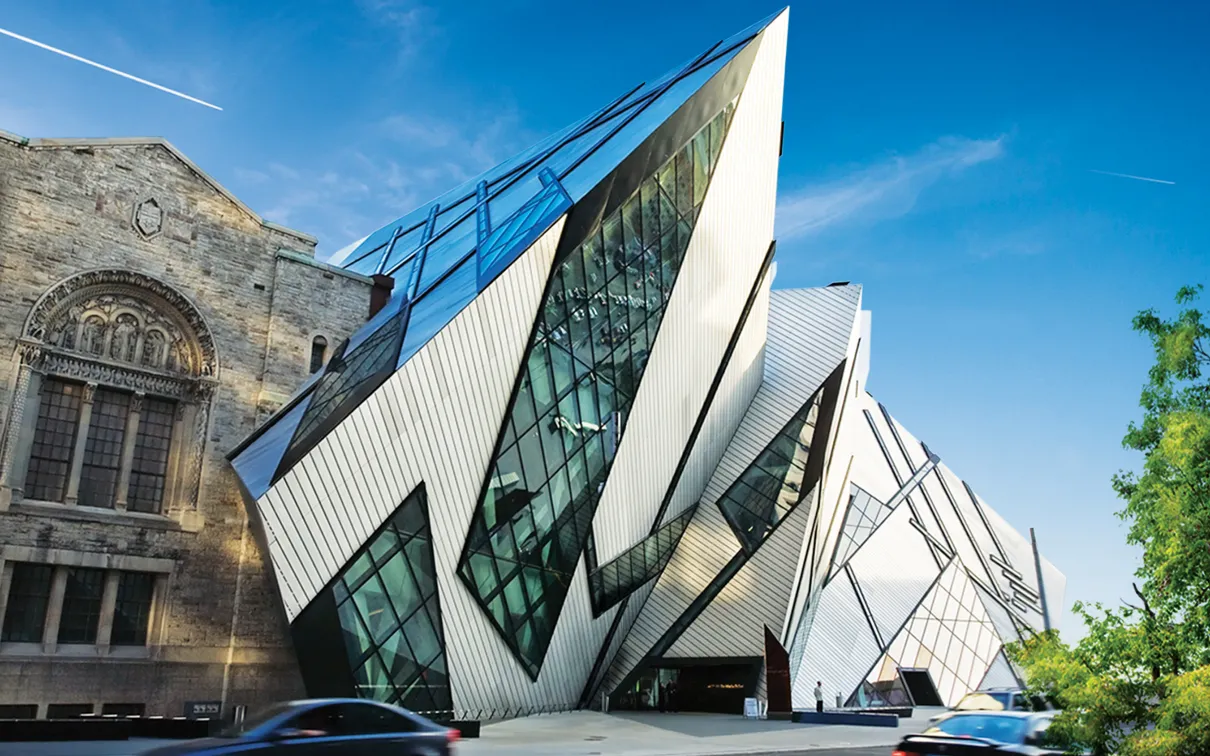The Forbidden City: Inside the Court of China's Emperors
Published
Category
Press Release
The Forbidden City:
Inside the Court of China’s Emperors
_________________________________________________________________
Once off limits to all but emperors and their families, the Forbidden City
opens its doors to ROM visitors on March 8, 2014
(Toronto, Ontario, October 9, 2013) Details of the premiere engagement of The Forbidden City: Inside the Court of China’s Emperors were unveiled this afternoon at the Royal Ontario Museum (ROM). The Museum will host The Forbidden City from Saturday, March 8 to Monday, September 1, 2014 in the Garfield Weston Exhibition Hall on Level B2 of the Michael Lee-Chin Crystal. The Forbidden City is presented by the Robert H.N. Ho Family Foundation. Manulife Financial is the exhibition’s Lead Sponsor. The exhibition is organized by the ROM in collaboration with the Palace Museum (Beijing).
ROM Director and CEO Janet Carding said, "Our exhibition takes visitors on a remarkable journey to the heart of the Forbidden City, eventually to the personal study of the Emperor were few have ever been. With incredibly rare artifacts from Beijing's Palace Museum, augmented by objects from the ROM's own renowned collections, we tell the extraordinary stories and reveal the characters that, for centuries, made the Forbidden City the compelling centre of an immense empire."
Dr. Chen Shen, Vice President, World Cultures and Senior Curator, Bishop White Chair of East Asian Archaeology is the lead curator of The Forbidden City and responsible for developing its content. Dr. Shen says, "This exhibition will allow Canadians to see, for the very first time, the finest objects hidden from view in the Forbidden City. We have enjoyed working with our Palace Museum colleagues and, together, are developing fascinating, previously untold stories about life in the courts of the Chinese Emperors. The two museums’ relationship ensures that ROM visitors will enjoy many of China’s national treasures; some of which have never left the Palace. These objects, both luxurious and everyday, provide an extraordinary opportunity to advance our understanding, and appreciation of the people who lived within the walls of the Forbidden City.”
Dr. Shen is joined by Dr. Wen-chien Cheng, the ROM’s Louise Hawley Stone Chair of Far Eastern Art and Dr. Sarah Fee, the Museum’s Curator, Eastern Hemisphere Textiles and Fashion, as co-curators. In December 2012, the three curators travelled to China where they spent a week in the vaults of the Palace Museum. During their time at the museum, they selected some of the finest and story-rich objects in its vast collections.
Senator Victor Oh said, "As a Senator representing Ontario and a proud Chinese-Canadian, I am delighted that priceless royal treasures representing hundreds of years of Chinese imperial history will be on display at the ROM. The Forbidden City is not only a compelling testament to Canada's strong bilateral relationship with China, but also a reflection of our country’s rich and diverse heritage." Senator Oh is a respected member of The Forbidden City’s Community Advisory Council, a diverse group of individuals, including community leaders, who will assist the ROM in advising on the exhibition, creating partnerships in many communities, and counseling on exhibition programming.
MPP Dipika Damerla, Parliamentary Assistant to the Minister of Tourism, Culture and Sport, said “The Forbidden City will connect residents and visitors alike to a significant place in China's vast history - right here in Ontario. Innovative exhibits, like The Forbidden City, celebrate our diversity, our culture and encourage Ontarians to explore and experience the many treasures of the world right at their doorstep."
"The Forbidden City exhibition is an important exhibition for China and Canada with next year being the Cultural Year of China and Canada. The exhibition will help Canadians learn more about Chinese culture and life in China’s historic imperial palace. We are highly supportive of the ROM coordinating this exhibition,” said Mr. Fang Li, Consul General of the People's Republic of China in Toronto.
In sending greetings, Robert Y. C. Ho, Chairman of The Robert H. N. Ho Family Foundation said, “Bringing to life the 600-year-old imperial home, this exhibition will help deepen the Canadian audience’s understanding and appreciation of Chinese culture and history. Robust educational programming in support of the exhibition will encourage wider exploration by the public, young people and school students, in particular. Our Foundation emphasizes the educational aspect of exhibitions we support, hoping to advance cross-cultural insight and encourage popular appreciation for China’s rich cultural heritage.”
"The Forbidden City exhibit is a true celebration of Chinese culture and its deep-rooted history," said Nicole Boivin, SVP & Chief Branding and Communications Officer for Manulife Financial. “As a global company, Manulife Financial is committed to engaging the international communities where we live and work, like China where we've been operating since 1897. Partnering with the ROM to present this exclusive exhibit is a great way to honour the China-Canada Cultural Exchange in 2014, and commemorate the ROM’s 100th anniversary."
THE FORBIDDEN CITY
Built and used as the official imperial residence for China’s emperors during both the Ming (1368 – 1644) and Qing (1644 – 1911) Dynasties, the Imperial Palace, or the Forbidden City, was strictly off limits to all but the emperor, his family, and thousands of his servants. Made up of more than 90 architectural complexes, the Imperial Palace comprised about 980 buildings and approximately 8700 rooms. The palatial city became the Palace Museum in 1925, one year after Fu Yi, the Last Emperor, went into exile. Located in the heart of Beijing, the site is a magnificent complex spanning approximately 727,000 square metres. It houses the largest collection of China’s imperial collections of paintings, ceramics, and decorative objects. Designated as one of that country’s most important protected cultural heritage sites in 1961 by China’s State Council, the Forbidden City became a UNESCO World Heritage site in 1987. Today, it is considered one of the world’s most important museums.
THE EXHIBITION
While China’s last emperors called it home, their subjects called it The Forbidden City. Tales of China’s last emperors living within the Forbidden City compound have captivated us for centuries. The ROM’s exploration of life inside this mysterious enclave, the world’s largest imperial palace, uses many creative devices to summon up the Palace’s great halls, courtyards, terraces and roofs. Before visitors even enter the Forbidden City exhibition, they will preview the massive architectural complex of the Emperors' heavenly palace on earth. One will learn how the Forbidden City outwardly projected power and prestige, concealing an enormous, opulent interior realm. A visit to the exhibition will begin outside the Forbidden City, gradually progressing into the innermost private quarters of the inhabitants. Based on official accounts of their lives, and through intimate encounters with the luxurious objects they used each day, one will meet the emperors, their wives, court officials, concubines, and eunuchs, those castrated in order to live among the Emperors and their women.
Life Outside the Forbidden City is experienced, where an introduction provides fundamental information about the fascinating locale. Moving Inside the Forbidden City, the exhibition’s largest area, visitors will learn of the City’s governing and military endeavours, its artistic cultivation, and the everyday lives of the emperors and their families. The Outer Court, the official space where the emperor displayed his power to only those invited within its walls, as well as the Inner Court, the female realm where no man lived but the emperor and the eunuchs serving him, are showcased in this section. The Palace’s most private areas, restricted to all but the emperor himself, are also depicted. The exhibition’s priceless objects are launching points for the ROM’s adept story-telling, and a small but key cast of characters, including Emperors Yongzheng and Qianlong and Empress Dowager Cixi, as well as a concubine, eunuch and child, is profiled here. Their stories provide further illumination on the lives led in the Imperial Palace.
Finally, Leaving the Forbidden City portrays the final chapter of the Forbidden City as it began its transformation to the Palace Museum. Here, we learn of the fall of the empire during the last Dynasty as well as the fate of the Imperial Palace’s precious objects. In this area, the opulent spectacle of the emperors’ personal tastes is countered by the poignancy of the Last Emperor’s departure. Once the palace of China’s emperors, the gates of the Forbidden City are now open for all. Visitors are brought back to their own world, with an appreciation of the palace – then and now.
The Forbidden City draws on the Palace Museum’s vast collection of masterpieces and archival material as departure points, which are augmented by engaging, ROM-produced multimedia presentations. Further enhancing the visitor experience of the exhibition, ambitious and varied programming throughout its ROM engagement will appeal to scholars, adults, and families.
OBJECTS
Approximately 250 objects will travel to the ROM from Beijing’s Palace Museum. Many of these are national treasures never before seen in North America. Approximately 80 artifacts have never travelled outside the walls of the Forbidden City. These include textiles, calligraphy, paintings, books, official documents, ceramics, silver, gold, jade, enamel, lacquer, and wood. Among the exhibition highlights are a throne of lacquer, jade, and ivory. Dated to1736-1795, the majestic perch was reserved for emperors only. Made for comfort it was, more importantly, a symbol of authoritative power. A charming and delicate porcelain cup (1464 – 1487) adorned with chicken images was created by Emperor Chenghua for his mother who loved small objects. Exceedingly rare, only two such cups exist today in the Forbidden City collection. A ceremonial robe, made of yellow, heavily embroidered silk, was worn by six year old Emperor Tongzhi when he ascended to the throne in 1862. These and the exhibition’s other prized objects from the Palace Museum are augmented by a selection of remarkable artifacts from the ROM’s own internationally renowned Chinese collections. Owing to the significant presence of light-sensitive textiles and paintings, there will be an extensive rotation of objects at approximately the half way point of the exhibition’s engagement.
THE PALACE MUSEUM
The palatial home became the Palace Museum in 1925, one year following the exile of the Last Emperor, Pu Yi. The Palace Museum is housed in the former palace of the Ming (1368-1644) and Qing (1644-1911) Dynasties. Popularly called The Forbidden City, its collections comprise over 1.5 million art treasures spanning five thousand years of Chinese history with a rich concentration of art and artifacts from the Qing imperial court. Today, it is one of the world’s most important, and most visited, museums. On a single day, on October 2, 2013, the Palace Museum welcomed approximately 175,000 visitors through its doors.
ROM CENTRES OF DISCOVERY
To enhance access and advance understanding of its extensive collections and curatorial expertise, the ROM now has eight areas of focus – Ancient Cultures, Biodiversity, Canada, Contemporary Culture, Earth & Space, Fossils & Evolution, Textiles & Fashions, and World Art & Culture. Each Centre of Discovery subject area is designed to help people better connect with the vibrant ROM communities most relevant to them. The wide-ranging themes, content, and objects on display in The Forbidden City particularly relate to three Centres: Ancient Cultures, Textiles & Fashions, and World Art & Culture. Visitors can expect inspired programming and insightful events across these three Centres to heighten the exhibition experience.
ROM SOCIAL MEDIA
Like: ROM Facebook
Follow: @ROMtoronto @ROMAncient ROM Instagram ROM Google+
Join the conversation: #ROM100fc #ROM100
Watch: ROM YouTube
The Forbidden City is organized by the Palace Museum and the Royal Ontario Museum.



